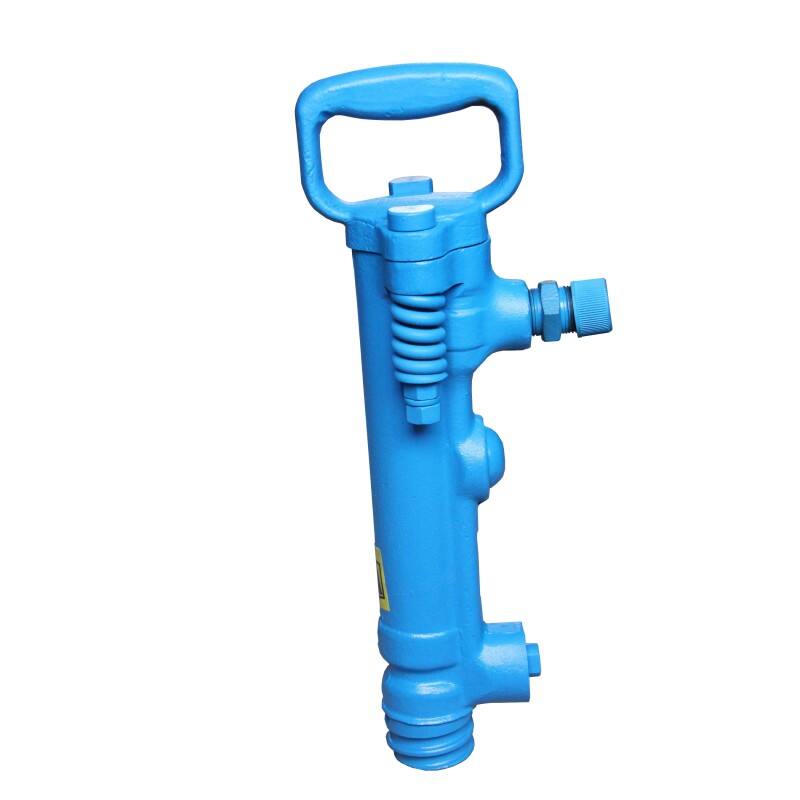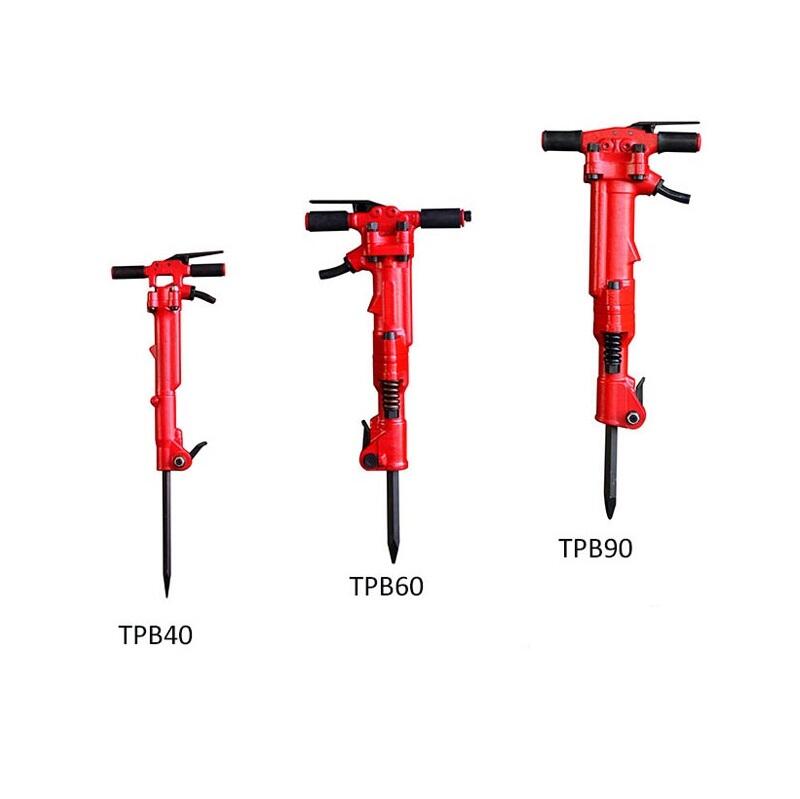Industrial construction and demolition projects require powerful, efficient tools capable of breaking through concrete, asphalt, and other hardened materials. The pneumatic breaker has emerged as an indispensable piece of equipment across various industries, offering superior performance compared to traditional manual methods. These compressed air-powered tools deliver consistent impact force, reducing operator fatigue while maximizing productivity on demanding job sites.

The versatility and reliability of pneumatic breaking equipment make it essential for contractors, utility companies, and maintenance crews working in challenging environments. From breaking up deteriorated roadways to creating precise demolition patterns in structural work, these tools provide the controlled power needed for professional applications. Understanding the various uses and applications helps professionals select the right pneumatic breaker for their specific project requirements.
Construction and Demolition Applications
Concrete Breaking and Removal
Professional demolition crews rely heavily on pneumatic breakers for efficient concrete removal in both residential and commercial projects. These tools excel at breaking through reinforced concrete foundations, removing deteriorated sidewalks, and creating openings in existing structures. The controlled impact force allows operators to work precisely around utilities and sensitive areas without causing excessive vibration damage to surrounding structures.
Large-scale demolition projects benefit from the consistent performance that pneumatic breakers provide throughout extended operating periods. Unlike electric alternatives, compressed air tools maintain their power output regardless of ambient temperature or continuous use. This reliability proves crucial when working on tight project schedules where equipment downtime can result in significant cost overruns and delays.
Foundation and Footing Work
Excavation contractors frequently employ pneumatic breaking equipment when preparing building sites that contain existing concrete structures or rock formations. The ability to break materials into manageable pieces facilitates easier removal and disposal, reducing overall project costs. These tools prove particularly valuable when working in confined spaces where larger demolition equipment cannot operate effectively.
Site preparation often requires selective breaking around existing utilities or property boundaries. A pneumatic breaker offers the precision control needed for such delicate operations while maintaining the power necessary for efficient material removal. The handheld nature of these tools allows operators to work at various angles and positions, ensuring thorough completion of foundation preparation tasks.
Road Construction and Maintenance
Asphalt and Pavement Repair
Municipal road crews and paving contractors depend on pneumatic breakers for routine maintenance and repair operations on city streets and highways. These tools effectively remove damaged asphalt sections, allowing for proper patch installation that ensures long-lasting repairs. The ability to create clean, precise breaking patterns helps achieve better bonding between new and existing pavement materials.
Pothole repair represents one of the most common applications for portable pneumatic breaking equipment in municipal operations. Road maintenance crews can quickly remove deteriorated asphalt and prepare properly shaped cavities for hot mix application. This efficiency reduces traffic disruption time while ensuring quality repairs that withstand heavy vehicle loads and weather conditions.
Utility Installation and Access
Utility companies frequently require access through paved surfaces for underground pipe and cable installation or repair work. Pneumatic breakers provide the controlled breaking capability needed to create precise openings without damaging adjacent infrastructure. The compact size of handheld units makes them ideal for working in narrow trenches or confined utility corridors.
Emergency utility repairs often demand rapid response capabilities that pneumatic breaking equipment readily provides. Water main breaks, gas line repairs, and electrical cable replacement projects benefit from the immediate availability and consistent performance of compressed air tools. The ability to operate these tools in wet conditions gives utility crews additional flexibility when responding to emergency situations.
Mining and Quarry Operations
Rock Breaking and Processing
Mining operations utilize pneumatic breakers for secondary breaking of oversized rock materials that cannot be processed through primary crushing equipment. These tools help reduce large boulders to manageable sizes for conveyor transport and further processing. The durability and power output of industrial pneumatic breakers make them suitable for the demanding conditions found in quarry environments.
Surface mining operations benefit from the portability and versatility that handheld pneumatic breaking equipment provides for selective material removal. Operators can work precisely around valuable ore deposits or remove unwanted materials without disrupting the surrounding rock structure. This selective capability helps maximize resource recovery while minimizing waste material handling costs.
Tunnel and Underground Work
Underground construction projects require specialized equipment capable of operating in confined spaces with limited ventilation. Pneumatic breakers excel in tunnel construction applications where electric tools might pose safety risks due to moisture or explosive atmosphere concerns. The compressed air power source eliminates electrical hazards while providing reliable performance in challenging underground conditions.
Cave-in removal and tunnel maintenance operations depend on the controlled breaking capability that pneumatic tools provide for safe material removal. The ability to work at various angles and positions allows operators to address structural issues without compromising tunnel integrity. These applications demonstrate the versatility and safety benefits of pneumatic breaking equipment in specialized construction environments.
Industrial Maintenance and Repair
Equipment Foundation Repair
Industrial facilities require periodic maintenance of equipment foundations and anchor points to ensure proper machinery alignment and vibration control. Pneumatic breakers facilitate the removal of deteriorated concrete around heavy equipment foundations without causing damage to sensitive machinery or surrounding infrastructure. This precision capability proves essential for maintaining production equipment in operational condition.
Plant maintenance crews utilize pneumatic breaking equipment for various structural repair projects including floor repairs, wall modifications, and drainage system maintenance. The ability to operate these tools in active industrial environments without creating electrical hazards makes them preferred choices for facility maintenance operations. Regular maintenance schedules benefit from the reliable performance and minimal setup requirements of compressed air tools.
Refractory and Furnace Maintenance
Steel mills, foundries, and other high-temperature industrial operations depend on pneumatic breakers for refractory brick removal and furnace maintenance tasks. These applications require tools capable of breaking extremely hard materials while operating in harsh environmental conditions. The durability and consistent performance of pneumatic breaking equipment make it suitable for these demanding maintenance applications.
Furnace relining operations often work within tight maintenance windows where equipment reliability becomes critical for minimizing production downtime. Pneumatic breakers provide the dependable performance needed to complete refractory removal tasks on schedule. The ability to operate these tools in high-temperature environments gives maintenance crews additional flexibility when planning furnace maintenance procedures.
Specialized Applications and Industries
Archaeological and Historical Preservation
Archaeological excavations require precise material removal techniques that preserve historical artifacts and structural details. Pneumatic breakers offer controlled breaking capability suitable for carefully exposing buried structures without causing damage to valuable archaeological materials. The variable impact settings available on modern pneumatic tools allow archaeologists to adjust breaking force according to material sensitivity and preservation requirements.
Historical building restoration projects frequently encounter situations requiring selective material removal around original architectural elements. Pneumatic breaking equipment provides the precision control needed to remove deteriorated materials while preserving historical integrity. These applications demonstrate the versatility of pneumatic tools beyond traditional construction and demolition uses.
Disaster Response and Emergency Services
Emergency response teams rely on portable pneumatic breaking equipment for search and rescue operations in collapsed structures and disaster zones. The ability to create precise access openings through debris allows rescue personnel to reach trapped victims safely. The compact size and reliable operation of handheld pneumatic breakers make them essential tools for disaster response operations.
Natural disaster cleanup efforts benefit from the efficiency and durability that pneumatic breaking equipment provides for debris removal and site clearance operations. Hurricane damage, earthquake rubble, and flood-damaged structures often require specialized tools capable of working in unstable conditions. The safety and reliability of compressed air tools make them preferred choices for emergency response applications.
Selection Criteria and Performance Considerations
Power Requirements and Efficiency
Selecting appropriate pneumatic breaking equipment requires careful consideration of project-specific power requirements and efficiency factors. Different applications demand varying impact energy levels and striking frequencies to achieve optimal breaking performance. Understanding material hardness, thickness, and breaking volume helps determine the most suitable pneumatic breaker size and configuration for specific projects.
Compressed air supply requirements significantly impact overall system efficiency and operating costs for pneumatic breaking operations. Proper compressor sizing ensures adequate air flow and pressure to maintain consistent tool performance throughout extended operating periods. Energy efficiency considerations become particularly important for large-scale projects where fuel or electricity costs represent significant operational expenses.
Durability and Maintenance Requirements
Industrial applications demand pneumatic breaking equipment capable of withstanding harsh operating conditions and heavy use schedules. Tool durability directly impacts project costs through reduced maintenance requirements and extended service life. Quality construction materials and proper maintenance procedures help ensure reliable performance and minimize unexpected downtime during critical project phases.
Regular maintenance schedules and proper operator training significantly extend pneumatic breaker service life while maintaining peak performance capabilities. Understanding lubrication requirements, wear part replacement intervals, and proper operating techniques helps maximize tool investment return. These factors become particularly important for contractors and industrial facilities that depend on pneumatic breaking equipment for regular operations.
FAQ
What air pressure and flow requirements are needed for pneumatic breakers
Most handheld pneumatic breakers operate efficiently at air pressures between 90-150 PSI, requiring air flow rates of 25-90 CFM depending on tool size and application. Proper compressor sizing ensures consistent performance and prevents power loss during extended use. Always consult manufacturer specifications for optimal operating parameters and compressed air system requirements.
How do pneumatic breakers compare to electric and hydraulic alternatives
Pneumatic breakers offer superior durability and consistent power output compared to electric tools, while providing better portability than hydraulic systems. They operate safely in wet conditions and explosive atmospheres where electric tools pose safety risks. However, they require compressed air infrastructure and may have higher operating costs in some applications compared to electric alternatives.
What safety precautions are essential when operating pneumatic breaking equipment
Essential safety measures include wearing appropriate personal protective equipment such as safety glasses, hearing protection, and steel-toed boots. Operators should maintain proper footing and grip while avoiding overreaching during operation. Regular inspection of air hoses, fittings, and tool condition prevents accidents and ensures reliable performance throughout project completion.
What factors determine the appropriate pneumatic breaker size for specific applications
Material hardness, thickness, and breaking volume requirements determine optimal tool size selection for specific applications. Harder materials and thicker sections require higher impact energy tools, while precision work benefits from smaller, more controllable units. Consider operator fatigue, project duration, and access limitations when selecting between different size categories and weight classes.


